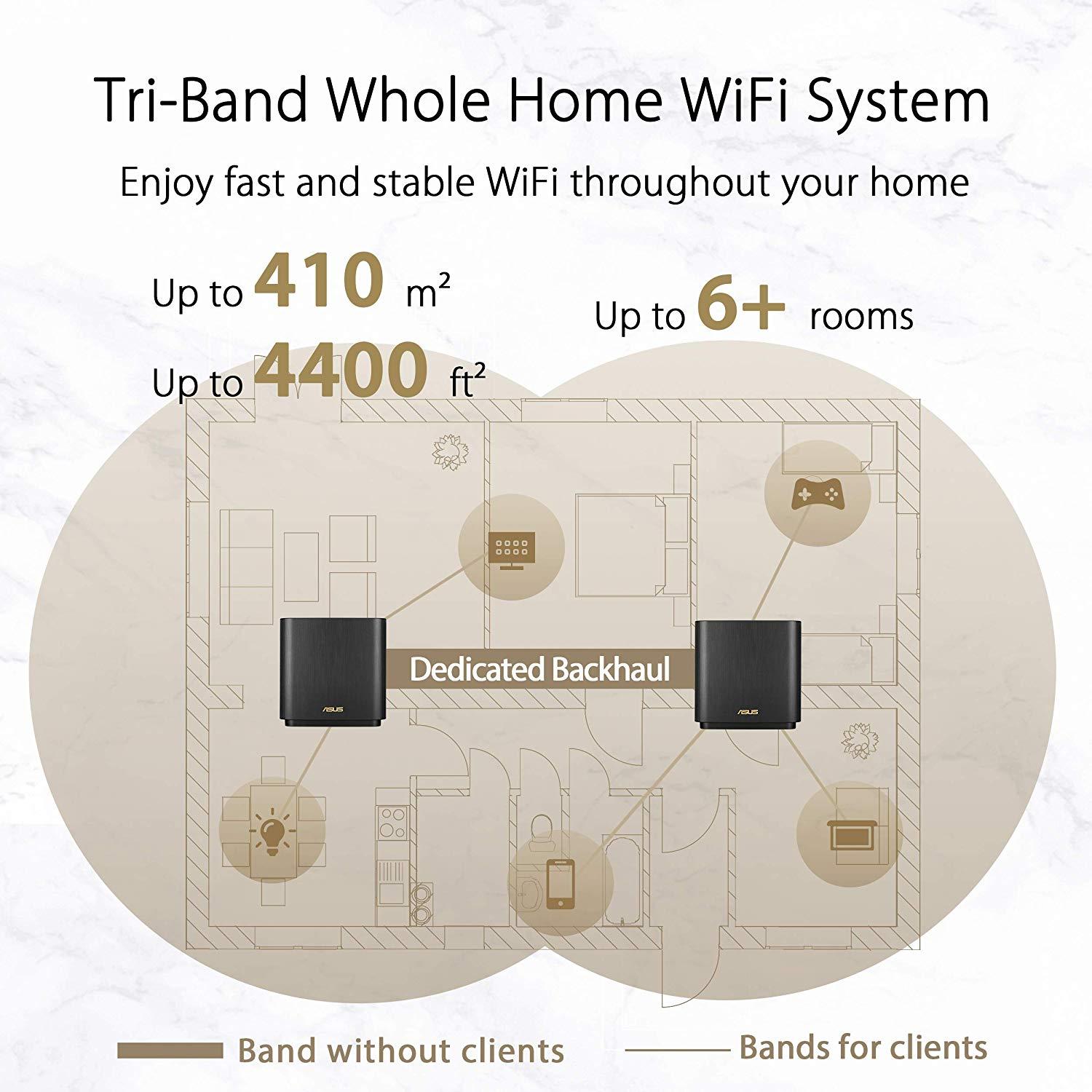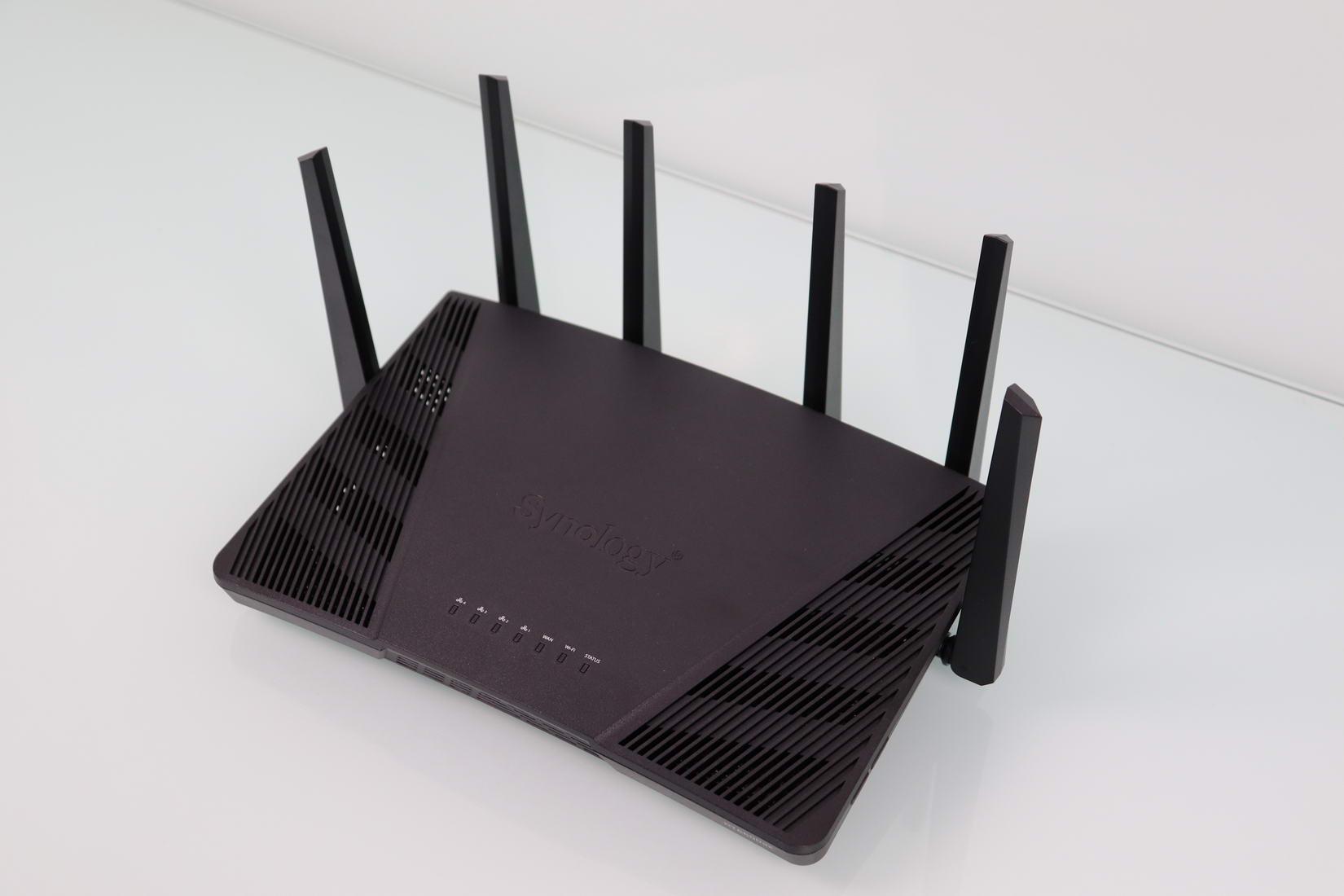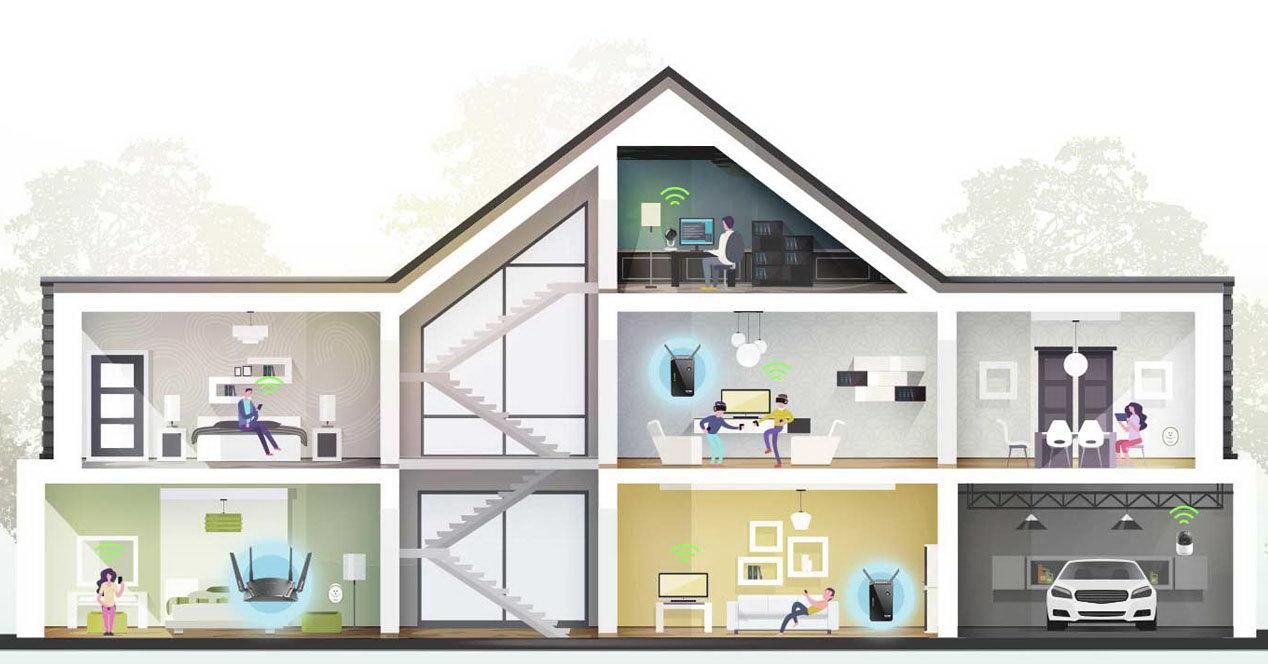Today Wi-Fi connectivity at home is essential, not only to connect with laptops, but also with smartphones, tablets, Smart TVs and even home automation devices. Having good coverage throughout our home is essential, and, of course, also the real speed that we are going to achieve. Often, the main manufacturers provide us with square meters of coverage that are capable of covering their devices, are these estimates made by manufacturers true? Today at RedesZone we are going to explain how far WiFi can go at home.
Square meters indicated by the manufacturer
Router manufacturers usually give an estimate of how many square meters their devices are capable of covering, whether they are routers or Wi-Fi Mesh systems, however, it is just that, an estimate, and very rarely will it correspond to the reality. For example, if we go to the web of a WiFi Mesh system, it will indicate that with two nodes we will be able to cover up to 410 square meters and up to 6 rooms:

Logically, a single WiFi router will clearly cover less space in square meters and also in rooms, especially if we have several floors in our house, be it a duplex or a chalet. Of course, this is a fairly optimistic estimate, because we must take into account a large number of factors that influence when it comes to having more or less WiFi coverage in our home. Next, we are going to show you everything that influences the Wi-Fi connection at home, which is why it varies so much that giving an estimate is complicated.
Factors that influence WiFi coverage
A large number of factors influence the WiFi coverage that we achieve in our homes, so it is very difficult to make a realistic approximation, because each house and environment is completely different, only estimates can be made. Next, we are going to explain what factors influence coverage.
-
Frequency bands used: the 2.4GHz band will always have a greater coverage in our home, although a lower speed. The 5GHz band, on the other hand, will have a much lower coverage, because it behaves worse with obstacles and distance, but it will offer us a higher speed. For this reason, if you care about wireless distance or coverage, you will probably have to use the 2.4GHz band even if you sacrifice real speed.
-
Position of the router: placing the router inside a cabinet, whether made of wood or glass, is not a good idea, because the coverage it is capable of providing will be clearly less. It is very important to place the router in a central place in our house, and at a height of approximately one meter above the ground, on a table or in a closet, but with free space.
-
Antenna position: if the router has external antennas, it is recommended to place the antennas in different orientations and not always vertical, in order to provide homogeneous coverage.

-
Obstacles in the house: if we have many thick walls, thick or glass doors, WiFi coverage may not reach the last corner of our house. For this reason it is so important to minimize the number of obstacles we have at home.
-
Construction of the house itself: if we have very thick brick walls, the wireless coverage will be attenuated much faster than if the walls were made of materials such as plasterboard. Therefore, the construction of the house itself also greatly influences the wireless coverage that our router or WiFi Mesh system is capable of providing.
As you can see, we have many factors that directly influence wireless coverage. Of course, we have not gone into other aspects such as the quality of the router components, the placement of the antennas if they are internal, nor the gain of the antennas (because in all of them we will have the same output power, being regulated in Spain and other EU countries).
WiFi distance at home
Outdoors estimating coverage is much easier than doing it indoors, where we have many factors influencing coverage. After testing dozens of routers in the RedesZone tests and in two different scenarios, we can confirm the following:
- If you use a single router at home, keep in mind that it will be able to cover approximately 120 square meters of coverage on the same floor. You should keep in mind that the actual coverage is greater, but only if you connect to the 2.4GHz band, so the speed will be clearly lower when compared to the 5GHz band. In addition, on many occasions it is possible that we have a very weak signal in this frequency band.
- If you have a house with two floors, a single router will serve to cover about 75 square meters on each floor, however, this assumes that you place the router in a central place, without obstacles, and taking into account that in the furthest place you will get very little WiFi coverage, and therefore a lower speed.
- If you have a house with three floors and 75 square meters per floor more or less, if you place the router on the central floor you will be able to cover all the floors. However, if you place the router on the lower or upper floor, you will only provide coverage on the nearest floor.

WiFi mesh systems are a great help for very large houses, either horizontally and even in houses with two or more floors. In these cases the coverage we can provide is clearly superior.
- If you use a couple of Mesh nodes, you will be able to cover about 250 square meters on the same floor, but it is an estimate, with these large houses it is very important to take into account the construction materials.
- If you have a two-story house, you can cover about 120 square meters per floor if you place a node on each floor. It is essential that the Mesh node has a very good coverage of the Mesh router, to provide the best possible speed. It is recommended that they be connected via cable between them, so that the backbone network works through the Ethernet network cable.
- In the case of having a house with three floors and only two nodes, then you can cover all three but depending on where you place the nodes.
As you can see, even if a manufacturer indicates that with its equipment we are going to cover certain square meters, this is measured in an ideal environment with hardly any obstacles, because later in real life the results change radically, due to all the factors that we have explained.














